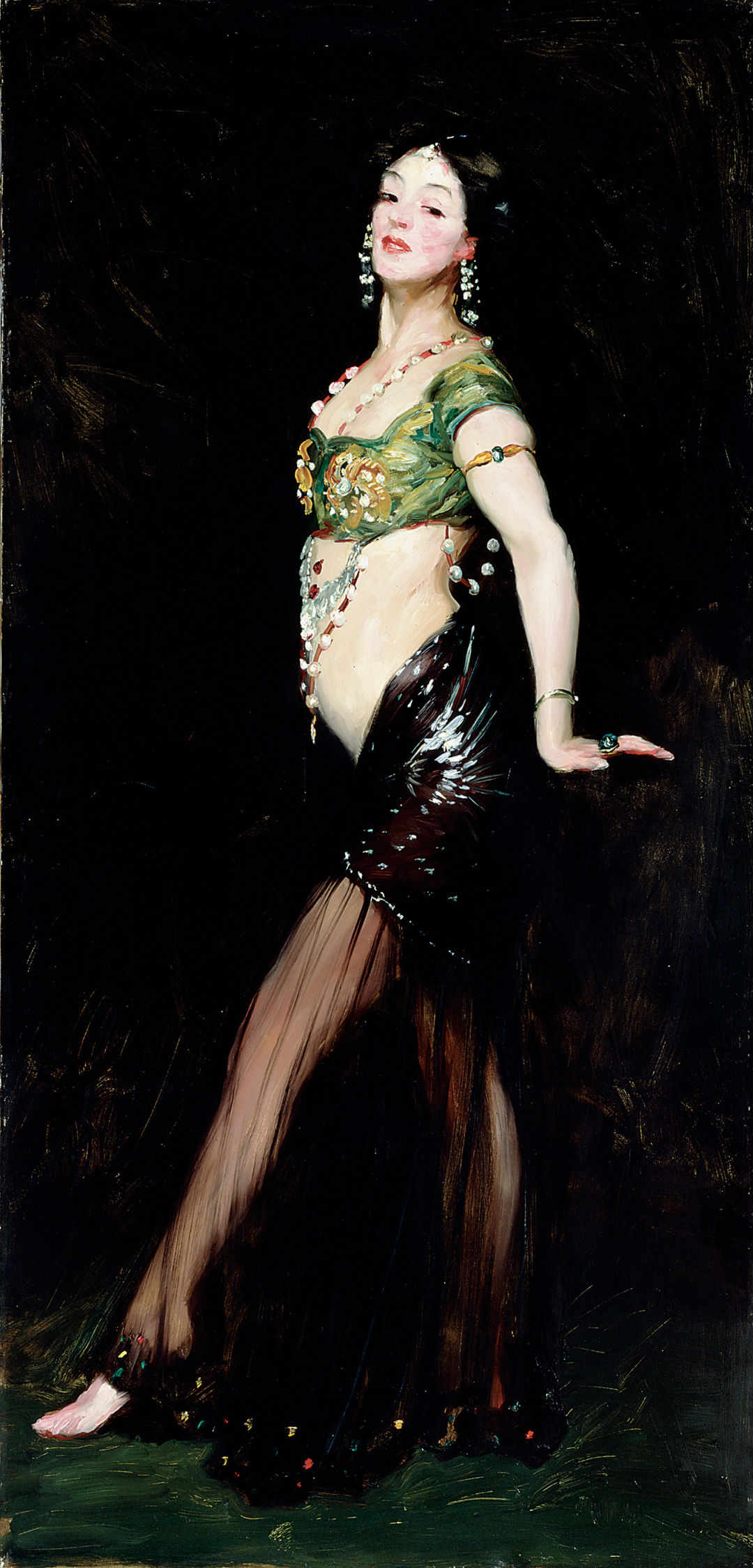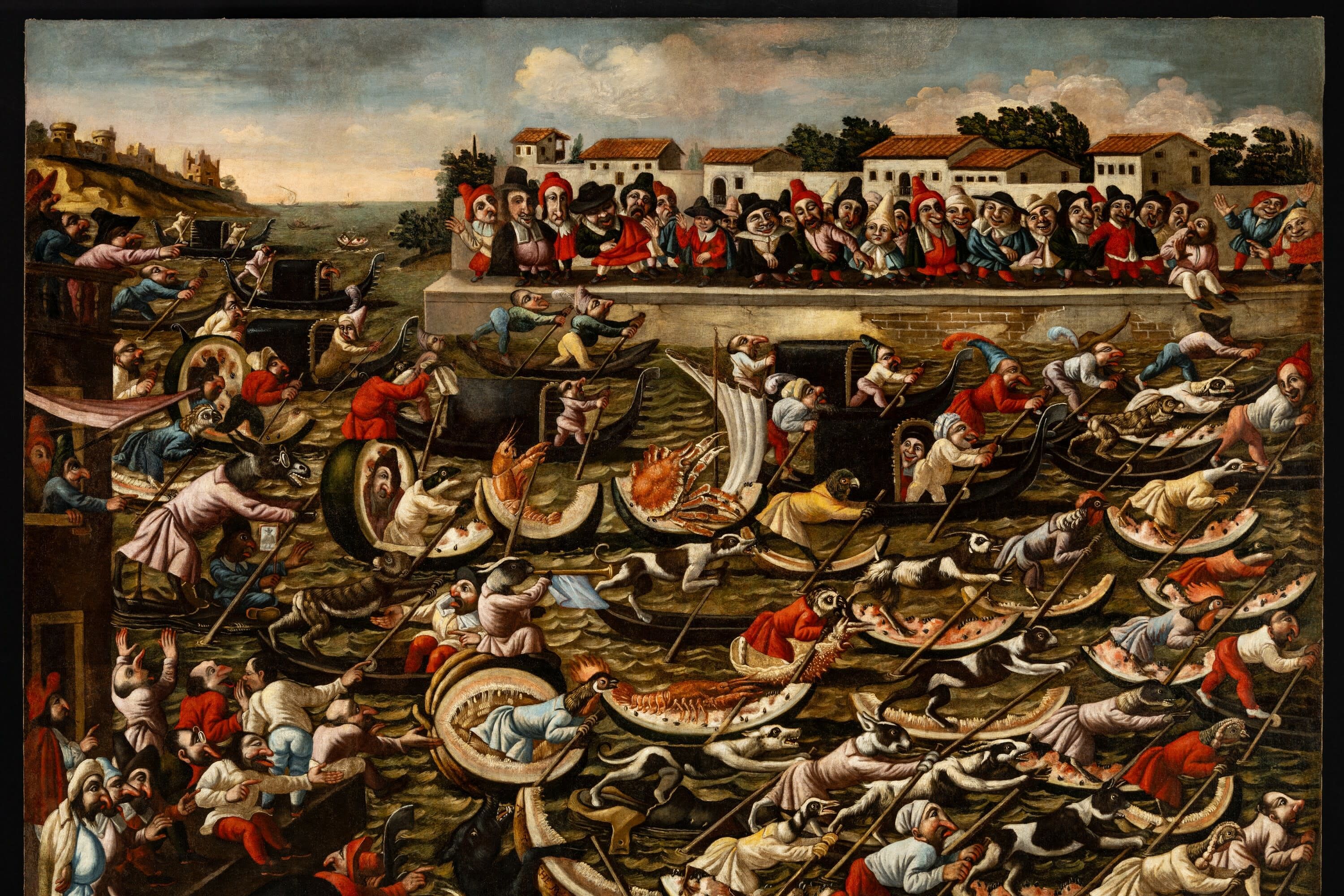Salome's Sensual Dance

Robert Henri's Salome
Image: Courtesy TheRingling
This canvas, on view at The Ringling, is the second of two that Robert Henri painted in 1909 depicting soprano Mademoiselle Voclezca in the title role in Richard Strauss's opera Salome. (The other painting resides at the Mead Art Museum, located at Amherst College.) In 1907, all New York was so scandalized by the opera that its performance was suppressed after only one presentation.
According to the New Testament, the young Salome danced so magnificently at the birthday banquet of her stepfather, King Herod, that he promised to grant her any request. At her mother's urging, Salome asked for the head of Saint John the Baptist. Strauss's opera, based on the play by Oscar Wilde, transformed a gruesome tale into something cruel and sexually charged, interpreting Salome not as an innocent young girl but as a grown and dangerously sensual woman, ready to exact her revenge. A critic at the time remarked, "Her long legs thrust out with strutting sexual arrogance and glint through the over-brushed back veil. It has far more oomph than hundreds of virginal, genteel muses, painted by American academics. He has given it urgency with slashing brush marks and strong tonal contrasts. He's learned from Winslow Homer, from Édouard Manet, and from the vulgarity of Frans Hals."
Unable to see the opera himself, Henri invited Mademoiselle Voclezca to perform the notorious “Dance of the Seven Veils” in his studio, and painted her there. The artist's brushwork suggests the alluring, undulating rhythms of her dance: Long strokes render her bare waist and transparent skirt. These, in contrast with the rapid staccato paint marks that indicate her jewelry, give the impression that this dance is happening right before you—you can almost hear the clinking of her beads.



